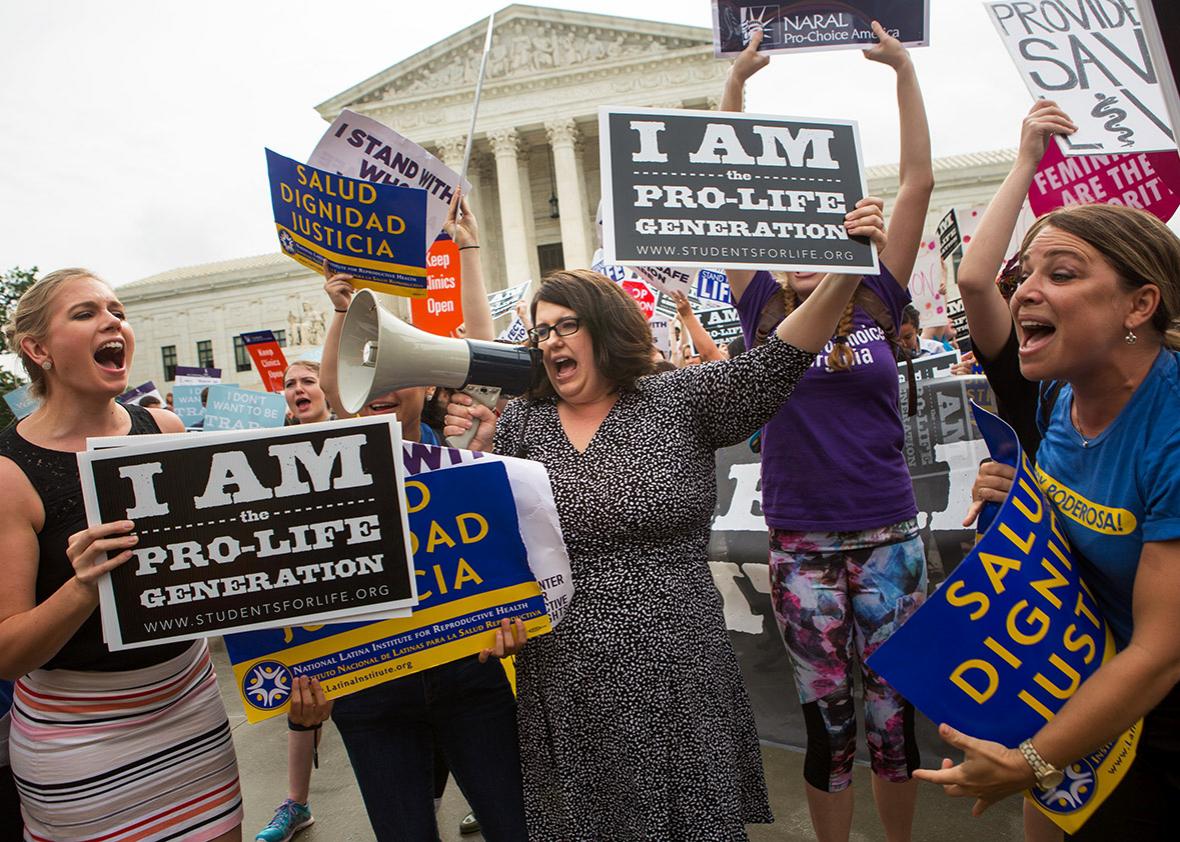First and foremost, HOORAY! The Supreme Court’s 5–3 decision striking down the Texas abortion restrictions is an unqualified, tremendous, and long overdue victory for abortion rights and the Constitution. It is a win for women—and also for families, men, children, and American society. It is also a win for our core constitutional values of liberty and equality and for the Supreme Court: The court could have done nothing but strike down the Texas law and still been consistent with its 1992 reaffirmation of the core of Roe v. Wade in Casey. As Walter noted, the court’s very integrity was on the line, and ultimately it did much more than the bare minimum that needed to be done.
Whole Woman’s Health reaffirmed that this most important and personal of decisions is for women to make, not the state of Texas nor any governmental entity. Beyond that, the court applied the undue burden test in a way that should provide meaningful protection against many of the mounting state restrictions—especially those aptly called TRAP (targeted regulation of abortion providers) laws—that disguise their purposes and for years have been denying increasing numbers of women access to abortion services.
Monday’s decision is not just a pro-women decision, respecting our autonomy and protecting our health. It also is pro-family: Most women who have abortions already have children and are making the decision that is right for them and their families. It also clarifies that it is an illegitimate role of government to impose impediments to women’s reproductive health care. The government instead should support women in preventing unintended pregnancies, and in having healthy pregnancies and children at times of their choosing.
So it’s an important and long-awaited victory.
Now that I’ve taken a couple of hours for unreserved celebration (and relief), my thoughts go deeper and forward: to what this decision does not address, to the women for whom this constitutional right remains hollow, to the fact the court remains closely divided, to the proven creativity and resilience of those who seek to overrule and gut Roe, and to the real and continued need for political change.
I really do not mean to rain on this wonderful parade. But we should recall the millions of women who will continue to have great difficulty accessing legal abortion services due to obstacles that remain unaffected by this decision (at least in the short run). Among them: women who live many miles from the nearest clinic and still face mandatory waiting periods requiring repeat visits due to explicit efforts to create “abortion free” states through legal restrictions, women who lack health insurance or private resources to pay for their abortions, women and health care providers who face extra-legal obstacles such as harassment and stigma.
While the court’s consideration of the Texas law has broken through and attracted national attention, the impact of hundreds of state restrictions and even the very fact of that magnitude have remained largely under the political and media radars. Here’s one astounding fact: States have enacted more than 1,000 restrictions in the 43 years since the court decided Roe v. Wade—and more than 1 in 4 of these restrictions were enacted in just the past five years.
The court’s decision certainly should help slow the avalanche of abortion restrictions around the nation. But I am not at all confident it will do all it should.
My own state of Indiana has been embarrassingly at the forefront of attempting to obstruct women’s reproductive choice, including by passing clearly unlawful laws. Just this March, Indiana imposed many new abortion restrictions, among them a long list of circumstances in which women are prohibited from obtaining abortions—a list that creatively and cynically tracks civil rights laws by banning abortions because of a fetus’ race, color, national origin, ancestry, sex, or disability. This law clearly was unconstitutional even before Monday’s decision, but that did not stop Indiana (a federal district court decision is expected this week). Indiana also was the first state to enact an illegal statute (enjoined by a federal court) to seek to defund Planned Parenthood, an organization that does more than any other to reduce the need for abortion by providing contraception services and sexuality education. Will the Indiana Legislature and Indiana Gov. Mike Pence respect the court’s decision? I hope so, but I’m not counting on it.
This decision should serve to empower and mobilize those who respect women and their constitutional right to reproductive choice. I have no doubt it will activate those who oppose choice and who can be counted upon to try to ramp up the political assault on reproductive health care. We need representatives at every level who respect women and their rights, and especially U.S. senators who will do their job and confirm justices and judges.
